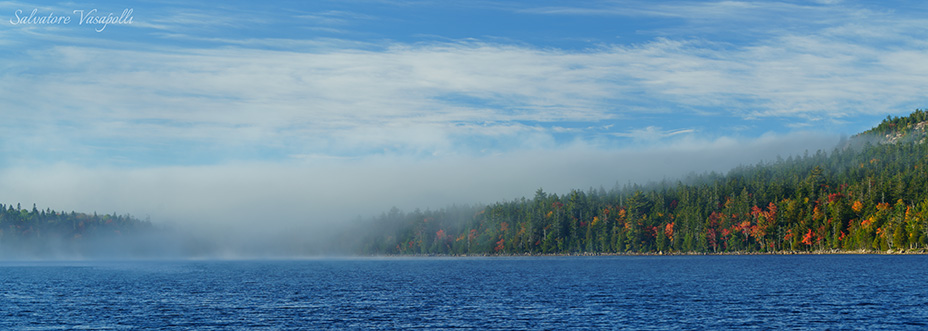I spied the outlook to the north as I drove west on I80. It look like it would have an excellent exposure to the south west winter’s sunset and since it was almost on the top of Allamuchy Mountain near 1,000 feet it should have a bird's eye view of much of the Musconetcong River Valley and the mountains to the east. It was nearly right above the historic Waterloo Village- a hamlet of early 19th century buildings built around a Morris Canal lock that included a 400 year old Native American village. It was a short decision to make, so, I got off the interstate at the next exit on the opposite side of the mountain. Eventually, after making a half circle around the mountain, I made it back the road just underneath the outlook and found conveniently a turnout and trailhead parking area. It was here that I would begin a quick hike to the outcrop of rocks above or so I thought.
So I parked, grabbed my tripod, hooked it on to my backpack and took off. While hiking I noticed something different about the plastic trailblazes on the trees. It was then realized this was Rock Climbing access trail that would take me to the bottom of the cliffs and end below the overlook, not around them to the top. Now I was not in the mood to climb a cliff so at trail’s end I noticed a snow covered very steep dangerously exposed slope between two cliffs that I could hike up. If I lost my footing on the slippery snow covered rock or the on the leaves of autumn underneath the snowpack, I would make good usage of newly acquired Obamacare insurance plan if I happen to survive with a broken back or neck. Or, I could hike a quarter mile in each direction and circumnavigate them. After a deep contemplation that lasted three or four seconds I decided on the death climb. Delicately I seek firm footings before each step. I took my time and dug out solid steps in the snow on the flatter surfaces between the rocks and boulders or dirt. In the area where there were none, I looked for a hand hold if one was to be found. As neared the mid section of the climb where it steepened, I got little nervous when I looked below to see far up and exposed a position I was in. I even almost thought about turning back but that too was just as dangerous or more so. Going up is always much easier than finding footing climbing down.
A few minutes later, with deep breaths and breaking a sweat, I was hiking an easier route to the summit and I was a relieved as came across a trail I recognize as the Highlands trail. The Highlands trail was created 1990’s around the time New Jersey passed it second most important conservation protection act. It was to be modeled after the Pine Barrens Conservation Region in southern New Jersey. I was positive this trail would take right to the overlook and was soon scouting out the location for the sunset event. It had everything I thought it was have, good sunset exposure, overview of the Musconetcong river valley and Waterloo Village within it.
As I scope out the angles of the compositions I would shoot, the cloud front I saw to the south earlier in the day made it way north over me and created overcast shadows upon landscape. Well, I’ve been down this road before and was ready just to enjoy a good hike and view but soon the sun reappeared. The front was not a solid cloud cover and soon started to break up even more. I quickly set up my tripod, ready, I began to shoot dramatic backlight images into the sun. The great thing about snow is that its lightness always comes out even in shadows or in the narrow latitude exposure range of film and digital cameras. The above image is a good example as the sun, its reflection in the snow all hold great color exposure.
In the final image of the day, the contrast in the shadows began to even out with the sky with the photographer’s best helper- the Neutral Graduated filter. Happy with the days turn out as I thought I created some good images, I gave thanks to Mother Nature as I usually do when good shoots turnout well.
Quickly I packed in fading light knowing that soon I would traveling in the dark, I decided to follow the Highlands Trail down the mountain instead of taking a more direct bushwhack route down knowing that it would have steep slopes and unsure footing under the snow. The trail route would be longer, much longer, but it would have brought me back safely- always take the route that will help Search and Rescuers find you in case you might have an accident. After walking two and half miles later, tired from slipping on rocks that I could not see in the dark until I was on top of them. So, I took out my cell phone and used its L.E.D. camera light instead of my headlamp stuck away in my pack but my phone was much more easily accessible. Always good to have backup! In twenty minutes, I found my car and soon was home downloading the images twice enjoyed my days experience.


